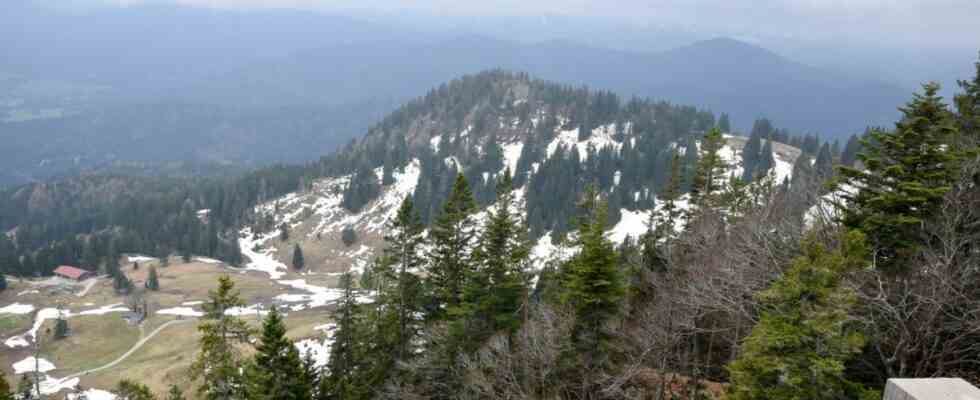If greenhouse gas emissions continue to be high, there will be much less snow in the Alps in the future. In the worst case – without climate protection measures – the progressive global warming could result in the number of days with snow cover being averaged over the entire Alpine region by almost half by the end of the century, according to two geographers in the journal Hydrology and Earth Sciences to report. The southern Alps, i.e. regions in Italy, Slovenia and France, would be particularly affected.
The duo Michael Matiu from the Eurac Research center in Bolzano, Italy, and Florian Hanzer from the University of Innsbruck first looked at the snow cover in the Alps for the years 2000 to 2020 using satellite data. In this way, they determined how many days of the year there was snow for certain regions and altitudes. The height of the snow cover was not examined.
With the help of climate models, the researchers then created various scenarios for the future snow situation in the Alpine region – depending on the further course of the climate crisis. According to the study, lower altitudes would lose a particularly large number of snow days, higher altitudes less. There are also regional differences. Matiu emphasizes that compliance with the Paris climate targets – i.e. limiting warming to well below 2 degrees and if possible 1.5 degrees compared to the pre-industrial age – would greatly limit the damage. “That gives hope,” he is quoted as saying in a press release.
If there is less snow in the mountains, this has dramatic effects on the water cycle
An example: At 2500 meters, averaged over the entire Alpine region, there was snow on 239 days a year. In the worst-case scenario, with global warming of 4 to 5 degrees, it would be just 163 days by the end of the century. According to the new forecasts, if the Paris climate targets were met, there would still be 213 days with snow cover at that altitude.
At an altitude of 500 meters, the number of snow days on average in the Alps would drop from 19 to 5 days in the event of strong warming. With significantly reduced emissions, it would still be 15 days. It was to be expected that there would be fewer days of snow in the future, says Matiu. “But the changes with strong global warming of 4 to 5 degrees are very high.”
If there is snow on fewer days of the year in the mountains, this can have drastic effects, for example on the water cycle. In winter, more water comes down from the mountains that would otherwise remain there as snow. In spring and summer there is less meltwater flowing into the valleys. Affected regions must find ways to have enough water at the right time for agriculture, energy supply, household use and tourism despite these changes in the future, Matiu said. Ski areas should then also have a much harder time.
It is also to be feared that the lack of snow caused by climate change will further drive global warming. Because white snow surfaces reflect more sunlight than rocks or grass surfaces. This causes them to heat up faster. In addition, rising temperatures are threatening many plant and animal species in the Alps, from certain mountain flowers to ibex and marmots.

